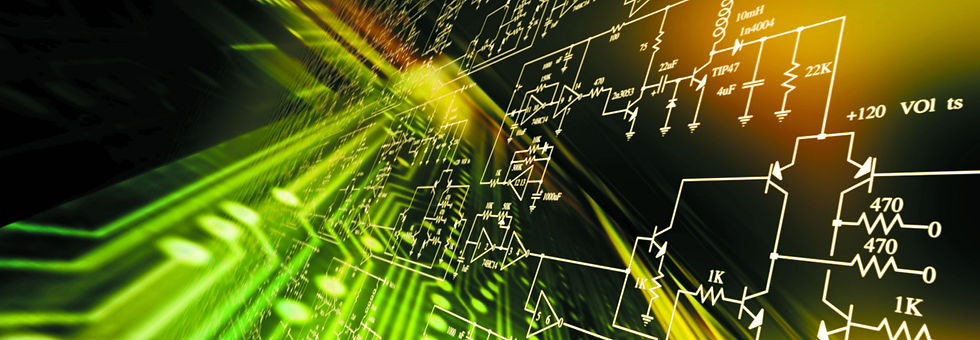

MEL TECH
CIRCTRONICS
Line - Following Mobot without using Microcontroller
I. Introduction
A mobile robot is an automatic machine that is capable of locomotion. Mobile robots have the capability to move around in their environment and are not fixed to one physical location. By contrast, industrial robots are usually more-or-less stationary, consisting of a jointed arm (multi-linked manipulator) and gripper assembly (or end effector), attached to a fixed surface.
The MonsterBot is a line-following mobile robot, a line follower robot is basically a robot designed to follow a ‘line’ or path already predetermined by the user. This line or path may be as simple as a physical black line on the floor or as complex path marking schemes. In order to detect these specific markers or ‘lines’, various sensing schemes can be employed. These schemes may vary from simple low cost line sensing circuit to expansive vision systems. The choice of these schemes would be dependent upon the sensing accuracy and flexibility required. Basically, a line-following robot is a self-operating robot that detects and follows a line drawn on the floor. The path to be taken is indicated by a black line on a white surface. The control system used must sense the line and man oeuvre the robot to stay on course while constantly correcting the wrong moves using feedback mechanism, thus forming a simple yet effective closed- loop system.
II. Theory
1.1 Working principle:
The sensor module used on the robot has two LED-LDR sensors mounted on it. LED or light emitting diodes used are semiconductor diodes and LDR is also used as light sensors. The module has a transmitter which transmits the light and a receiver to receive or detect the reflection of light. If the color code beneath the sensors is white (light reflector), then they will reflect the light but if the color is black (light absorber) then the light won’t be received by the receiver which turns off the sensor module.
1.2 How robot follows the line:
The left sensor module is being connected to the left motor and the right sensor module is connected to right motor. When the receiver of left sensor module receives the light it turns the sensor module on and in turn the module turns the left side motor on and same happen with the right sensor module and motor. This way when a left turn comes up left sensors goes on pointing on the black line which results in no light received by the sensor receiver and in result it turns off the left sensor module which turns off the left motor. This way only right motor works and robot takes a left turn until both the sensor modules turns on. The case is same with the robot taking a right turn. The robot is using a high intensity LED and LDR sensor. This way LED illuminates the area under the LDR so that LDR sensor can detect the reflected light. If LDR sensor detects the light it will decrease its resistance and in case of darkness it increases its resistance. Thus white surface reflects most of the light and black absorbs the light. By this method the task of following a line is accomplished.
III. Materials Used




QTY MODEL UNIT PRICE SUBTOTAL
1) 1 RC Car 300.00 300.00
2) 2 Geared motors 150.00 300.00
3) 2 Preset 20k 5.00 10.00
4) 2 LDRs 5.00 10.00
5) 2 LED (5mm) 2.00 4.00
6) 2 220 - ohm Resistor 0.25 0.50
7) 5 Berg strip, 2pin relmat 8.00 40.00
8) 1 L293D IC 100.00 100.00
9) 4 battery (4.5V) - -
TOTAL: P 764.50
IV. Design and Construction
-
Mechanical System
Figure 1: L293D Motor Drive
A motor controller is a device or group of devices that serves to govern in some predetermined manner the performance of an electric motor. A motor controller might include a manual or automatic means for starting and stopping the motor, selecting forward or reverse rotation, selecting and regulating the speed, regulating or limiting the torque, and protecting against overloads and faults.
L293D is a dual H-Bridge motor driver, so with one IC we can interface two DC motors which can be controlled in both clockwise and counter clockwise direction and if you have motor with fixed direction of motion then you can make use of all the four I/Os to connect up to four DC motors. L293D has output current of 600mA and peak output current of 1.2A per channel.
Figure 2: Robot moving straight, left and right respectively.



A chassis consists of an internal framework that supports a man-made object in its construction and use. It is analogous to an animal's skeleton. An example of a chassis is the underpart of a motor vehicle, consisting of the frame (on which the body is mounted). If the running gear such as wheels and transmission, and sometimes even the driver's seat, are included then the assembly is described as a rolling chassis.
-
Driving and Steering System
A wheeled mobot is a mobile robot whose movement is based on two separately driven wheels placed on either side of the robot body. It can thus change its direction by varying the relative rate of rotation of its wheels and hence does not require an additional steering motion.
To balance the robot, additional wheels or casters may be added.
If both the wheels are driven in the same direction and speed, the robot will go in a straight line. If both wheels are turned with equal speed in opposite directions, as is clear from the diagram shown, the robot will rotate about the central point of the axis. Otherwise, depending on the speed of rotation and its direction, the center of rotation may fall anywhere on the line defined by the two contact points of the tires. While the robot is traveling in a straight line, the center of rotation is an infinite distance from the robot. Since the direction of the robot is dependent on the rate and direction of rotation of the two driven wheels, these quantities should be sensed and controlled precisely.


A gear or cogwheel is a rotating machine part having cut teeth, or cogs, which mesh with another toothed part in order to transmit torque, in most cases with teeth on the one gear being of identical shape, and often also with that shape on the other gear. Two or more gears working in tandem are called a transmission and can produce a mechanical advantage through a gear ratio and thus may be considered a simple machine. Geared devices can change the speed, torque, and direction of a power source.
Electronics:
-
Block Diagram
Figure 3: Block Diagram of MonsterBot
In this circuit sensor, comparators, controller board, motor driver and motors are involved to run a black line following robot. The basic work of each element is as follows:
Sensor (LDR 1 & 2): The sensor senses the reflected light from the surface and feeds the result to the comparator. On white surface sensor gets the light reflected and on black the light is not reflected. This result of getting the light reflected or not is sent to the comparator.
Diode: A diode allows electricity to flow in one direction only and blocks the flow in the opposite direction. They may be regarded as one way valves and they are used in various circuits, usually as a form of protection.
Motor Driver: Motor driver (200rpm 12V 2A) is set up to make the robot move forward, turn left or turn right based on the input coming from the LDR sensor.
L293D IC: The current supplied by the controller board to is not sufficient to drive the motor. Thus motor driver provides sufficient current to run motor. It can take a maximum current of 600mA per channel which is more than enough to drive two motors.
-
Circuit
V. Evaluation and Discussion
The ultimate goal of the MonsterBot is to develop an efficient navigation mechanism using IC based mobile robot. But we tried to create a smaller yet accurately running circuit.
Problems encountered and solutions
Over Sensitivity of Infrared Sensors
The infrared receivers which are used by us were too sensitive. They even responded to day light as well. So we cover it with cardboard strips together with the LEDs. It reduced the effect of over sensitivity of detectors.
The dissimilar nature of two motors
This is one of the most critical problems that we faced. The motors were driven in different speeds in identical operating conditions. The major cause of this is the high friction of one
motor unit. There is a huge variation in the speeds of two motors due to that and the variation also unpredictable. A correction method would be needed to this process. We tried to counter with this problem using a lookup table under the guidance of our ECE friend.
Unavailability of quality components in local market
We could not find some components that are compatible with our requirements in the local market. Especially we couldn’t find the most important materials that we needed. We ordered the items at e-gizmo.
VI. Conclusion
Using IC based mobot, we effectively designed line following mobot. However, there are some problems encountered and consider for improvement. This project would not have been successful without every member of the group contributing and communicating during the problem-solving process, and without the knowledge and advice of Ms. Caparos. Overall, the line following robot was a tremendous success and an incredible learning opportunity for everyone involved.
VII. References
[1] http://en.wikipedia.org/wiki/Mobile_robot
[2] http://www.ripublication.com/aeee/39_pp%20
[3] Jean-Francois Dupis and Marc Parizeau, Vision-Based Line-Following Robot Controller, Canada. 2006
[5] http://electrobotix.blogspot.com/2012/04/line-follower-robot- without-using.html
[6]http://www.maplesoft.com/applications/view.aspx?SID=1467&view=html
[7]http://www.batteryspace.com/dcmotorhightorquemini12vdcgearmotor200rpmforhobbyprojects.aspx

